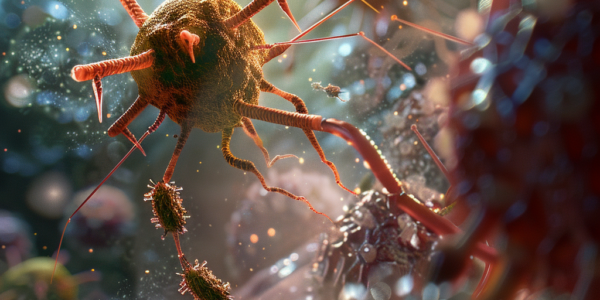NASA Observes Strong Solar Flare from the Sun
The Sun emitted a strong solar flare, peaking at 4:56 p.m. ET on March 28, 2024. Solar flares can impact radio communications, electric power grids, navigation signals, and pose risks to spacecraft and astronauts. This flare is classified as an X1.1 flare, denoting the most intense flares. To see how such space weather may affect Earth, please visit NOAA’s Space Weather Prediction Center, the U.S. government’s official source for space weather forecasts, watches, warnings, and alerts.
Rare Total Solar Eclipse to Cross North America on Monday
A total solar eclipse is set to cross North America on Monday, offering a rare spectacle as the moon blocks the face of the sun, temporarily darkening afternoon skies. The eclipse’s path will span Mexico, 15 U.S. states, and a small part of eastern Canada, providing a unique viewing opportunity for millions. For those outside the direct path, a partial solar eclipse will still be visible, with the moon appearing to take a ‘bite’ out of the sun and partially obscuring its light. Solar eclipses occur when the sun, moon, and Earth align, causing the moon to pass between the Earth and the sun, blocking its light and casting a shadow on the Earth. Neil deGrasse Tyson, director of the Hayden Planetarium at the American Museum of Natural History, explained that solar eclipses occur only with the new moon due to the tilted orbit of the moon around the Earth. This year’s eclipse will be visible over more populated areas of the continental U.S. than previous total solar eclipses, providing an opportunity for a wider audience to witness the celestial event.
New Study Reveals Limitations of Current Cystic Fibrosis Treatment
Researchers at the University of Geneva have discovered that a new treatment for cystic fibrosis, introduced in 2020, does not always prevent bacterial infections in the respiratory system. The treatment fails to prevent the development of ‘docking stations’ on the surface of the respiratory tract, to which bacteria attach themselves to infect the body. By studying 3D models of human lung cells, the scientists found that combining the current treatment with other molecules may restore cell balance and better prevent bacterial infections, shedding light on the limitations of the current treatment for cystic fibrosis and providing a potential pathway for improving patient care.
Study Reveals Brain’s Regulation of Emotions
Researchers at Dartmouth have uncovered the intricate mechanisms behind how the brain regulates emotions, offering new insight into mental health treatments. The study shows the role of specific brain regions in emotion regulation and the influence of neurotransmitters like dopamine, serotonin, and cannabin.
Israeli Researchers Make Breakthrough in Treatment of Bone Metastasis in Breast Cancer Patients
Israeli researchers at Tel Aviv University have developed a new therapeutic strategy using existing medications to inhibit the spread of breast cancer to the bone, offering hope for improved treatment strategies and potentially impacting other types of cancer as well. The groundbreaking study utilized animal models and tissue samples from patients to demonstrate the efficacy of the new approach, providing new insights into combating the spread of cancer to the bone.
Groundbreaking Discovery in Neuroscience Reveals Unique Development of Brain Blood Vessels
Researchers have made a groundbreaking discovery in neuroscience, uncovering a specific enzyme crucial for the invasion of blood vessels into the brain. This finding challenges long-held beliefs about vascular formation and has significant implications for the treatment of neurological diseases. The study, led by Prof. Benoit Vanhollebeke, highlights the functional alignment between the birth of brain vessels and their specific properties, particularly the blood-brain barrier. This breakthrough not only enhances our understanding of the cardiovascular system but also opens new pathways for developing targeted treatments for neurological diseases.
Attack and defence in the microverse
Research team at University of Jena examines the interaction of attack and defence strategies when cholera-causing bacteria are infected with a bacteriophage. Tiny RNA molecules play a decisive role in the complex interaction. The findings have been published in Cell Host & Microbe.
UMass Amherst Researchers Use AI to Eavesdrop on Insects for Environmental Health Assessment
UMass Amherst researchers are leveraging machine learning to eavesdrop on the insect world, aiming to enhance environmental health assessment. By identifying different insect species through their sounds, researchers hope to gain insights into the shifting populations of insects, which can provide valuable information about the overall health of the environment. The study, recently published in the Journal of Applied Ecology, highlights the increasing significance of machine and deep learning in automated bioacoustics modeling. Laura Figueroa, assistant professor of environmental conservation at UMass Amherst and the senior author of the paper, emphasizes the crucial role of insects in ecosystems and the challenges in monitoring their populations. With the rise of environmental stressors and drastic changes in insect populations, traditional sampling methods are proving to be insufficient. The collaboration between ecologists and machine-learning experts is seen as a promising approach to fully unlock the potential of AI in identifying and monitoring insect populations. The potential of AI in environmental health assessment is evident, offering a non-invasive and efficient alternative to traditional entomological methods. As Figueroa points out, the ability to differentiate insect sounds and train AI models to identify species based on their unique sounds opens up new possibilities for understanding and safeguarding insect populations in the face of environmental challenges.
Obesity Study in UK, Women’s Tennis in Saudi Arabia, and Peace Initiative Between Switzerland and Russia
Study in the UK identifies genetic variants in two specific genes that may contribute to obesity risk factors. Women’s Tennis Association announces record prize money for WTA Finals in Saudi Arabia, sparking mixed reactions.
JAX Researchers Develop Platform to Study Genetic Diversity in Mutation Outcomes
JAX researchers at The Jackson Laboratory have developed a powerful platform using stem cells from eight different mouse strains to mimic genetic diversity, providing new opportunities for uncovering targets for therapeutic interventions. The platform allows for investigating the effects of background genetics on the DYRK1A gene, associated with autism, microcephaly, and intellectual disability in humans. This work has significant implications for understanding the role of genetic diversity in human health conditions and for identifying potential targets for therapeutic intervention.










